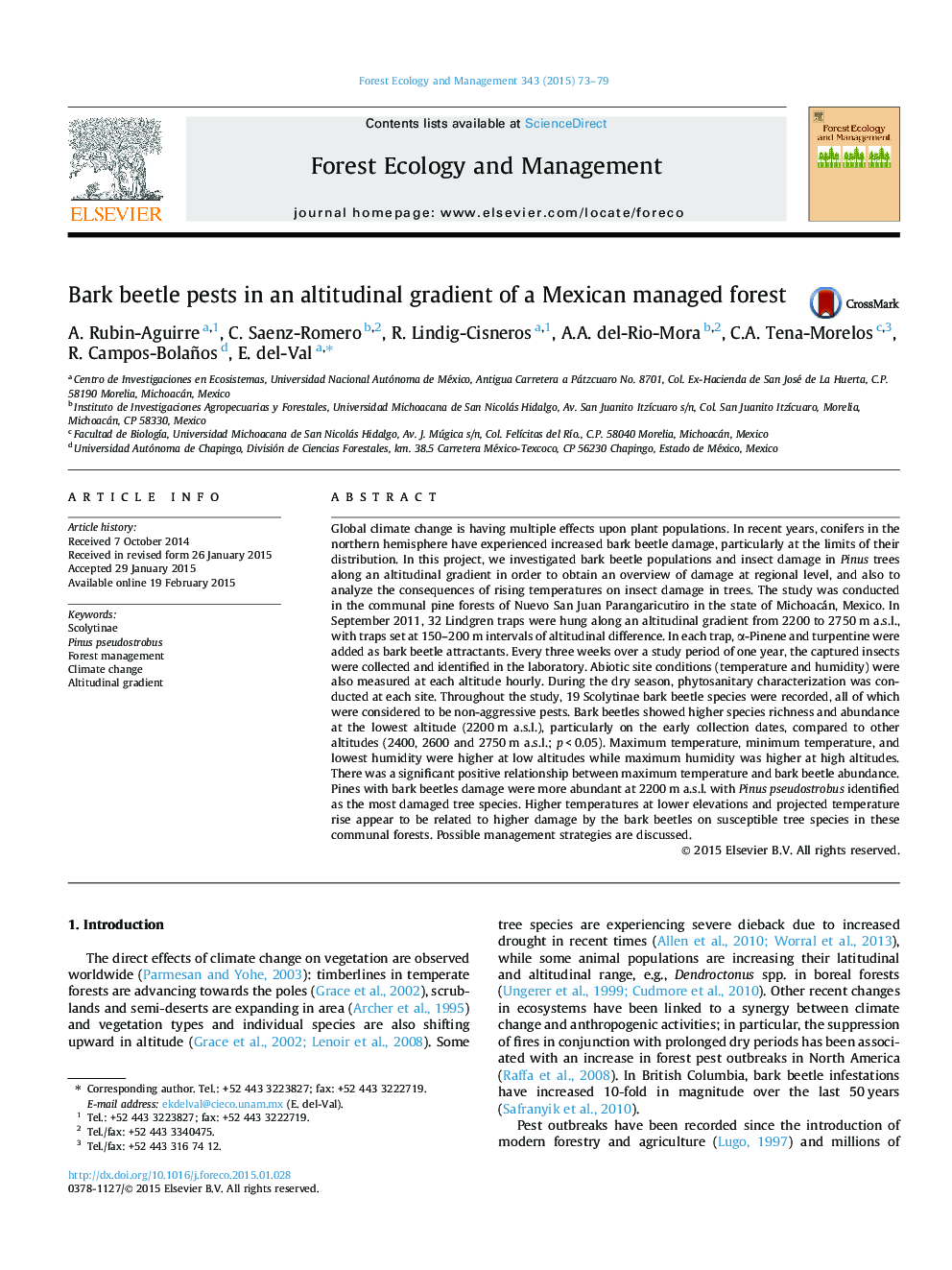| کد مقاله | کد نشریه | سال انتشار | مقاله انگلیسی | نسخه تمام متن |
|---|---|---|---|---|
| 86288 | 159176 | 2015 | 7 صفحه PDF | دانلود رایگان |
• Bark beetle diversity was higher in low altitudes in a Mexican pine forest.
• Bark beetle abundance was positively correlated with maximum temperature.
• Pinus pseudostrobus was significantly damaged by bark beetles at lower altitudes.
Global climate change is having multiple effects upon plant populations. In recent years, conifers in the northern hemisphere have experienced increased bark beetle damage, particularly at the limits of their distribution. In this project, we investigated bark beetle populations and insect damage in Pinus trees along an altitudinal gradient in order to obtain an overview of damage at regional level, and also to analyze the consequences of rising temperatures on insect damage in trees. The study was conducted in the communal pine forests of Nuevo San Juan Parangaricutiro in the state of Michoacán, Mexico. In September 2011, 32 Lindgren traps were hung along an altitudinal gradient from 2200 to 2750 m a.s.l., with traps set at 150–200 m intervals of altitudinal difference. In each trap, α-Pinene and turpentine were added as bark beetle attractants. Every three weeks over a study period of one year, the captured insects were collected and identified in the laboratory. Abiotic site conditions (temperature and humidity) were also measured at each altitude hourly. During the dry season, phytosanitary characterization was conducted at each site. Throughout the study, 19 Scolytinae bark beetle species were recorded, all of which were considered to be non-aggressive pests. Bark beetles showed higher species richness and abundance at the lowest altitude (2200 m a.s.l.), particularly on the early collection dates, compared to other altitudes (2400, 2600 and 2750 m a.s.l.; p < 0.05). Maximum temperature, minimum temperature, and lowest humidity were higher at low altitudes while maximum humidity was higher at high altitudes. There was a significant positive relationship between maximum temperature and bark beetle abundance. Pines with bark beetles damage were more abundant at 2200 m a.s.l. with Pinus pseudostrobus identified as the most damaged tree species. Higher temperatures at lower elevations and projected temperature rise appear to be related to higher damage by the bark beetles on susceptible tree species in these communal forests. Possible management strategies are discussed.
Journal: Forest Ecology and Management - Volume 343, 1 May 2015, Pages 73–79
